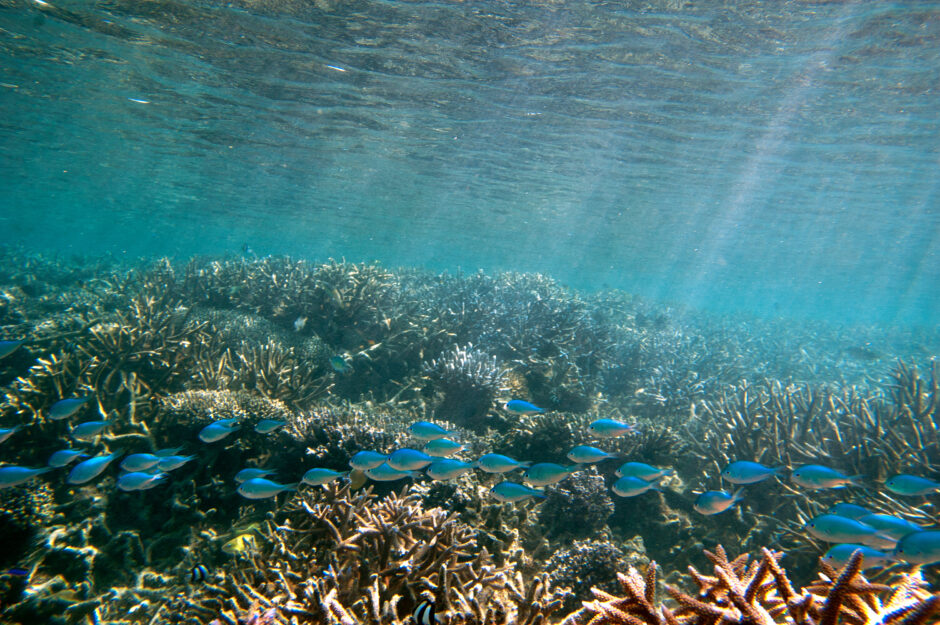Fish Larvae Move Better In Groups
 Black-axil chromis. Chromis atripectoralis (Credit: Paul Asman and Jill Lenoble via Wikimedia Commons CC BY 2.0)
Black-axil chromis. Chromis atripectoralis (Credit: Paul Asman and Jill Lenoble via Wikimedia Commons CC BY 2.0)Fish who swim together, stay together—or something like that. It’s well-known that fish swim in groups called schools or shoals. These groups serve unique purposes, with schools generally being more structured as bait balls or as a group of same-species fish all traveling together. For example, migrating salmon often travel as schools in the ocean for safety, improved foraging and more efficient swimming.
Simply observing the behavior is not enough to understand how and why fish school. The answer lies in fish biology. In addition to the social benefits and increased survival chances, fish have evolved the lateral line, a highly sensitive structure unique to schooling fish. The lateral line essentially senses movement around the fish, keeping them in the stereotypical schooling structure. Researchers have also theorized that the behavior is influenced by sight as some blind fish species also do not school—however, research has yet to conclude anything beyond correlation.
Fish Larvae Schools
Schooling is much more than a simple learned behavior. Not only are there biological factors that function as a means of forming schools, but the behavior can also be observed in very young fish. Not only is the behavior observed, but it is particularly beneficial for fish larvae. A 2015 study led by researchers at the University of Miami’s Rosenstiel School of Marine and Atmospheric Science reveals that larvae of damselfish swim straighter, faster and more consistently in one direction when they’re moving as part of a school.
The team assessed the efficiency of these schools by comparing the movements of individuals and groups compared the movements of individuals and groups of 10 to 12 in a species of damselfish, Chromis atripectoralis, in their natural environment off Lizard Island on the Great Barrier Reef.
The larvae were released into the target environment and then closely observed. The fish larvae were studied by a team of divers and a drifting image recording device called a “Drifting In Situ Chamber” developed by U. of Miami scientists.
The study is one of the few that has looked at the schooling behaviors of fish during the larval stage before they settle into new areas, like coral reefs. Before this investigation, it wasn’t exactly clear what benefits schooling provided young fish.
The full results, indicate that larval fish, though small in size and limited in development, still have the motor, sensory and cognitive equipment necessary for navigating the complexities of group movements. Researchers watched as groups of the young damselfish did better than those swimming alone. In all, schools of the fish swam on a 15 percent straighter course and 7 percent faster than individuals.
Conclusion
The study emphasizes the importance of group dynamics for young fish traveling larger distances. For adult fish, the benefits of schooling include discouraging predators from attacking and making it easier to detect or find food. For the young larval fish, schooling helps them move to new areas with speed and efficiency.
Results of the work shed new light on the group dynamics involved in moving fish from area to area because most other studies have only dealt with birds. With groups doing better than individuals, scientists think their findings will have implications for connectivity and fish recruitment success in future projects.



0 comments